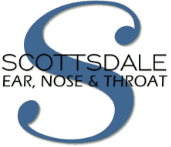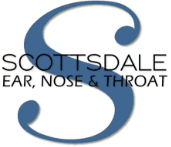The Different Types Of
Allergies
Allergies are a response by your immune system after coming into contact with various foreign substances such as pollens, foods, molds, animal dander, drugs and airborne pollutants.
Staying in control of your allergies associated with tree pollens (such as elm, maple, birch, poplar, beech, ash, and oak), fragrant flowers, and various types of grasses can be an intense seasonal battle in springtime.
Household allergies stemming from dust mites, pets, and molds, usually become more pronounced during winter months when air ventilation inside your home decreases.
Frequently Asked Questions
About Allergy Tests
What Should I Expect During Testing?
The test begins with swabbing the skin on your back with alcohol. There will be a wet cooling sensation. The person testing will inform you when the test begins. You will feel minor pressure from the tines of the testing device as the first series of antigens are applied to your skin. This sensation will go away within a few seconds, and then subsequent series of tests will be applied in five different locations on your back. As positive test results develop, you can expect some discomfort and itching. Avoid scratching while the tests develop and inform your provider if you feel other symptoms in addition to itchiness.
What Happens After The Test?
The provider will remove the antigens from your skin using alcohol wipes. If irritation, lingering discomfort, or itchiness continues, which is rare, you may receive hydrocortisone cream and/or oral Clarkin to help reduce the effects. Your provider will go over the results of the test with you and discuss any applicable treatment options.
Can It Be Tested If I Have A Skin Condition Or Moles?
Yes, you can still be tested if you have a skin condition or moles. Your provider will simply apply the tests on areas of your back that are not acutely affected. If no unaffected areas are available, you will receive a blood test in place of a skin test.
How Much Does Testing Cost?
Most insurance plans cover allergy tests. In most cases, you will only be responsible for paying the co-pay and/or deductible required for a typical doctor’s visit.
How Long Will The Reaction Last After The Test?
Itchy sensations begin to lessen as soon as the antigens are removed with the alcohol wipes. Any bumps that developed will go away in about an hour. In rare cases reactions last longer, but don’t usually cause a great deal of discomfort. It is very rare that the tests cause a lasting reaction, but Clarkin and hydrocortisone cream will help to minimize discomfort if necessary.
Will The Tines Penetrate My Skin?
No penetration of the skin is necessary. The testing unit (MAST device) only presses the antigens against your skin; no blood is drawn and the antigens are not injected beneath the skin. If a spot of blood should appear, the provider simply blots the area and continues with testing.
What If I Am Extremely Uncomfortable With Reactions Before 15 Minutes Are Up?
In cases when positive reactions are extremely intense, the technician will remove the antigen and read the results early.
How Does My Provider Evaluate The Reactions?
The reaction to each antigen produces a raised area on your skin. Each of these areas is measured with a millimeter ruler. Allergic reaction severity is graded as follows: 2-4mm= low; 5-7 = moderate; 8-10 = high; 11-13 = very high.
How Long Will It Take For Results To Develop?
Results are available within 15 minutes after the last series of antigens is applied. Your testing technician will monitor the reactions every five minutes or so throughout that time to make sure you are okay. Unless there are severe reactions, your technician will wipe away the antigens using alcohol wipes after 15 minutes and begin measuring the results.
Is There An Age Limit For Testing?
No. Younger children are tested for fewer antigens than older children and adults, but children of any age can undergo testing without concern.
Can I Be Tested If I Have A Tattoo?
Yes. Your testing technician will use ink-free areas on your back, arms, or legs to apply the antigens. If no ink-free areas exist, you will receive a blood test in place of a skin test.
Different Ways To Gain Control Over Your Allergies
You can gain control over your allergy symptoms and get
the relief you need by using three different types of treatment.
1. Antihistamines
Antihistamines are the most common option for gaining control over sneezing, runny nose, and itchy eyes – common symptoms of allergies. Those who suffer from seasonal allergic rhinitis (hay fever) are familiar with some of the most common antihistamines such as Benadryl and Chlor-Triemton. Although effective at overcoming symptoms, drowsiness is a common side effect. Those who operate equipment, drive, or simply cannot allow themselves to become drowsy might use Zyrtec, Clarinex, Allegra, and Claritin, which have reduced drowsiness side effects.
2. Decongestants
Decongestants address congestion and nasal stuffiness associated with allergies. Although highly effective at treating these symptoms, they tend to increase your heart rate and blood pressure. In addition, decongestants can also make prostate problems and glaucoma problems worse, making it essential to discuss the side effects of decongestants with your doctor before using them.
3. Allergy Shots
Allergy shots reduce the sensitivity of triggers known to set off allergic reactions. This is accomplished by injecting small amounts of the antigens to which you tend to have a reaction to over regular intervals. Initially, injections will be weekly, progress to monthly injections, and ultimately continue to be given every six to twelve months. The primary use of allergy shots is to address seasonal allergies responsible for sneezing, itchy eyes, and nasal congestion.
What’s The Right Treatment For You?
Because allergies are unique from one individual to another, there is no general course of treatment that can effectively treat every individual.
We recommend scheduling an appointment in order to identify the unique circumstances related to your allergies and symptoms so that we can customize a treatment plan that will provide both fast and efficient relief to meet your specific needs.
Simply complete the form on this page and one of our friendly team members will be in touch.

